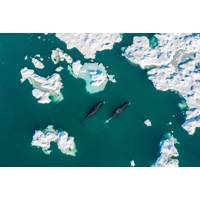
Naturally Quiet
in the Arctic due to more ship traffic and reductions in sea ice extent and thickness. The modelling predicts that increases in noise levels will not be uniform and can range from a doubling to a ten-fold increase, even in areas with relatively low shipping currently, such as Baffin Bay and the Chukchi sea.Noise could be reduced by slowing ships down, but many already travel relatively slowly at around 10 knots. Ships could be redirected away from the blue corridors – the migration pathways of many whales – but shifting the noise may just shift the problem. Sanctuaries could be created
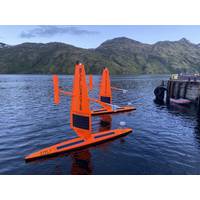
NASA Sends Robots to Study Climate Change in the Arctic
and shifting packs of sea ice in the Arctic. They provide a resilient and affordable means to validate satellite data and develop and improve algorithms that model changing temperatures.The 2021 NASA Arctic Cruise is ongoing; the Saildrone USVs passed through the Bering Strait and are headed into the Chukchi Sea. In previous Saildrone missions, NASA researchers found close correlation between satellite remote sensing measurements of sea surface salinity and data collected by Saildrone.The path taken by the saildrones during the first 2.5 months of the mission, from June 5 to August 30, 2021. Credit: Courtesy
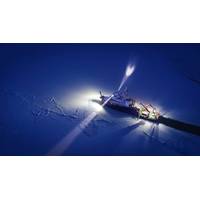
TECH FILE: Acoustic Tech Used to Understand Climate Change in the Arctic
have been great for power management. It’s really good to be able to have the instruments reliably collecting data for a whole year and retain robustness in the data collection,” Thomson says.The Signature1000s have also been attached to moorings to assess waves in shallower waters. In the Chukchi Sea, Thomson and Dr Lucia Hošeková captured a four-day-long wave event near the Alaskan coast, allowing them to explore how sea ice dampens the wave’s energy.“A next-generation acoustic profiler that really moves things forward”Thomson’s Arctic investigations
US Navy Submarines Surface in the Arctic Circle
; The first Arctic under-ice operations by submarines were done in 1947-49. On August 1, 1947, the diesel submarine USS Boarfish (SS-327), with Arctic Submarine Laboratory's founder Dr. Waldo Lyon onboard serving as an Ice Pilot, conducted the first under-ice transit of an ice floe in the Chukchi Sea. In 1958, the nuclear-powered USS NAUTILUS made the first crossing of the Arctic Ocean beneath the pack ice. The first Arctic surfacing was done by USS Skate (SSN 578) in March 1959. USS Sargo was the first submarine to conduct a winter Bering Strait transit in 1960. The
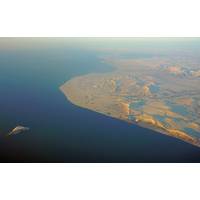
Alaska Requests Limits on US Offshore Drilling
has asked U.S. Interior Secretary Ryan Zinke to pare back a Trump administration plan for oil and gas leasing off the state's coast. While Walker supports offshore oil development, he said the Interior Department should focus on the most prospective areas off Alaska – the Beaufort and Chukchi seas in the Arctic and Cook Inlet in southern Alaska – and drop all others from the leasing plan. In asking for proposed lease sales to be dropped, Walker, an independent, joins governors of several other coastal states after Zinke's unexpected move to exempt Florida from the department's
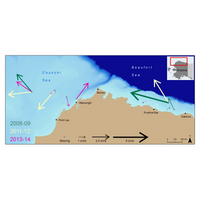
Ice Analysis in the Chukchi Sea
Tom Weingartner of the University of Alaska's College of Fisheries and Ocean Sciences and ASL are wrapping up the analysis of the 2014-15 ice draft, ice drift and current data from the Chukchi Sea Environmental Studies Program (CSESP) through funding from BOEM (Bureau of Ocean Energy Management). The completion of this analysis marks a milestone in a series of collaborations to better understand the Chukchi Sea. Two of the sites being analyzed have been observed since Shell Exploration and Production first started making measurements in the Chukchi Sea in 2008. Since those first deployments
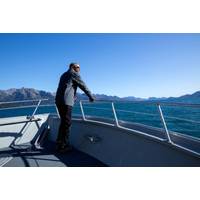
Obama Bans New Drilling off Alaska, Part of Atlantic Shore
that allows presidents to limit areas from mineral leasing and drilling. Environmental groups said that meant Trump's incoming administration would have to go court if it sought to reverse the move. The ban affects 115 million acres (46.5 million hectares) of federal waters off Alaska in the Chukchi Sea and most of the Beaufort Sea and 3.8 million acres (1.5 million hectares) in the Atlantic from New England to Chesapeake Bay. Trump, who succeeds Obama on Jan. 20, has said he would expand offshore oil and gas drilling. A recent memo from his energy transition team said his policy could
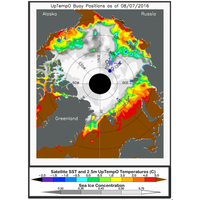
Arctic Sea Ice Melt Continues
As of August 14, Arctic sea ice extent is tracking third lowest in the satellite record, according to the National Snow & Ice Data Center (NSIDC). The southern route through the Northwest Passage appears to be largely free of ice. Despite a rather diffuse ice cover in the Chukchi Sea, it is unlikely that Arctic sea ice extent this September will fall below the record minimum set in 2012. Overview of conditions As of August 14, Arctic sea ice extent was 5.61 million square kilometers, the third lowest extent in the satellite record for this date and slightly below the two standard deviation
Hundreds of Scientists Urge Obama to Halt Arctic Oil Drilling
gas leasing or exploration should be allowed in the Chukchi and Beaufort seas in the foreseeable future,” the scientists said. The proposed federal oil and gas leasing program would last from 2017 to 2022 and includes two sales in the Arctic Ocean: the Beaufort Sea in 2020 and the Chukchi Sea in 2022. The letter urged the administration to consult native Alaskan groups on any further Arctic developments. The scientists said in the letter that expanding Arctic marine protection would help counter the effects of climate change. “The Arctic is home to
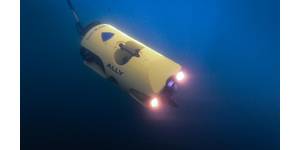
 February 2025
February 2025





